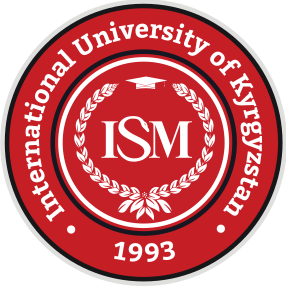- Department of Humanities and Natural Sciences
- Department of Fundamental Disciplines
- Department of Micro and Macro Anatomy
- Department of Public Health
- Department of Pathology
- Department of Pediatrics, Obstetrics and Gynecology
- Department of Special Clinical Disciplines
- Department of Special Surgical Disciplines
- Department of Therapy
- Department of Surgical Diseases
- Department of Infectious Diseases
Department of Pathology
Curriculum:
Subsequence:
Disciplines:
It is a fundamental medical discipline aimed at studying changes in organs and tissues caused by various pathological processes. The course includes the study of morphological changes in organs and tissues at the macroscopic and microscopic level. Students get acquainted with the main diseases of various organs and body systems, their morphological manifestations and clinical aspects. Special attention is paid to the role of pathological anatomy in the diagnosis, treatment and prognosis of diseases, including oncological diseases. Successful mastering of the discipline allows students to master the skills of morphological diagnosis and understanding of the pathogenesis of various pathological conditions.
Total labor intensity: 4 credits (120 hours)
Classroom hours: 72 hours
Independent work of students: 48 hours
Semester: 3
Final control: test
EMC Pathological anatomy, clinical pathological anatomy
Total labor intensity: 4 credits (120 hours)
Classroom hours: 72 hours
Independent work of students: 48 hours
Semester: 4
Final control: exam
an academic discipline that considers disorders of the body’s functions that occur in various diseases. The course includes the study of the causes, mechanisms of development and diagnosis of pathological conditions. Students will get acquainted with the main pathological processes, including inflammation, dystrophy, and neoplasms, as well as deepen their understanding of the molecular and cellular aspects of these changes. The course allows students to analyze and understand pathological changes in the body, which is an important basis for future medical practice (to apply the knowledge gained in further studies and practice in the field of medicine).
Total labor intensity: 3 credits (90 hours)
Classroom sessions: 54 hours
Independent work of students: 36 hours
Semester: 3
Final control: offset
Total labor intensity: 3 credits (90 hours)
Classroom sessions: 54 hours
Independent work of students: 36 hours
Semester: 4
Final control: exam
provides an opportunity for students in their further practical activities to monitor the quality of medical and diagnostic work in order to eliminate errors in diagnosis and treatment by clinical and anatomical comparisons; lifetime diagnosis of diseases by histological examination of biopsies, cytological material, as well as operatively removed organs and tissues; identification of acute infectious diseases; scientific research of the etiology, pathogenesis, morphogenesis and morphology of diseases, as well as issues of thanatogenesis through morphological, clinical and anatomical studies and experiment; statistical development of sectional material as one of the important factors determining the complex of therapeutic and diagnostic measures; advanced training of clinicians and dissectors by clinical and anatomical comparisons at autopsy and conducting clinical and anatomical conferences.
Total labor intensity: 1 credit (30 hours)
Classroom hours: 18 hours
Independent work of students: 12 hours
Semester: 10
Final control: test
It is one of the main fundamental medical disciplines. For a long time, she used the knowledge gained from the autopsy. The academic discipline “Forensic Medicine” is studied in order to form students’ professional competencies necessary to identify facts and circumstances, using knowledge of forensic medicine and forensic psychiatry, mastering the skills of drafting documents, correctly and fully reflecting the results of professional activity using knowledge in the field of forensic medicine and psychiatry.
Total labor intensity: 3 credits (90 hours)
Classroom hours: 54 hours
Independent work of students: 36 hours
Semester: 10
Final control: test
